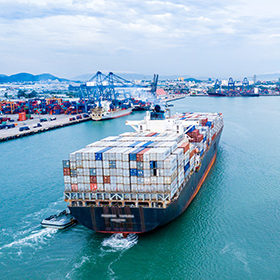Rising costs due to mega congestion on the world’s oceans

Corona backlogs and blocked ports here, upturn in the global economy and export boom from China there. As a result, ships are jammed worldwide, freight costs have reached record levels, and there is no relief in sight.
Expensive freight, expensive products
We recently requested a 20-foot container from Schenker for the Shanghai Hamburg route. Cost: around € 10,000. A year and a half ago, the same container cost €1,500. The massive increase in freight costs leads to an increase in the price of imported products. In some cases, transportation costs more than production in China.
Unpredictable freight costs
Freight costs have become unpredictable. Anyone who wants to book a container today must do so even though they don’t yet know the price. The shipping companies do not disclose this until loading onto the ship. So you sign a blank check. However, you do not have a choice. The container must be pre-booked, otherwise you will not get a place on the ship.
Global freight traffic has been operating at the limit for months, and unfortunately, given the backlog, it doesn’t look like this will change anytime soon. In the ports, the containers are waiting to be loaded. At the same time, some ports have to be closed completely or partially because of Corona. It is difficult to switch to air freight for price reasons, and there, too, demand is rising, and with it the price.
Causes of congestion
The global economy is just recovering from the pandemic, and in the USA gigantic aid programs are keeping consumers happy. The goods are purchased in Asia, especially in China, where the export economy is humming. This also increases the demand for freight capacity. However, sea freight capacities have not increased; on the contrary, corona-related failures are further aggravating the situation, or disasters such as that of the Evergiven in the Suez Canal are interrupting supply chains.
React flexibly and find new suppliers
So what to do? Wait and see, or rather accept the increased prices for consumer goods and hope that the situation will ease at some point. However, experts believe that this will not be until after Chinese New Year in February 2022.
Those who can react flexibly and quickly find new suppliers in the event of supply bottlenecks are now at an advantage. The U.S. home improvement chain Home Depot, for example, recently chartered an entire container ship without further ado to supply its stores. But there is also an opportunity for smaller companies to find alternative providers. We are happy to help here with our contacts in the Chinese market.
Urs Draeger, C2G Production, urs.draeger@c2g-production.de, 0176 641 271 88.